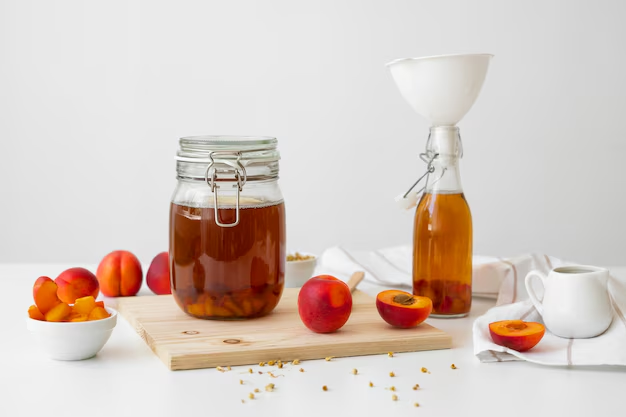How to Maximize the Freshness of Open Sauerkraut in Your Refrigerator
Picture this: you've just indulged in a delicious meal featuring sauerkraut, that tangy and crunchy fermented cabbage delight. It's the star of traditional dishes and a versatile condiment, but there's a pressing question: How long does open sauerkraut last in the refrigerator? Whether you're a sauerkraut enthusiast or a newcomer, understanding its shelf life and proper storage can help you make informed choices, minimize food waste, and ensure every bite is as delicious as the first.
The Lifespan of Open Sauerkraut in the Fridge
The Basics of Shelf Life
When you crack open that jar or bag of sauerkraut, its journey begins toward gradual degradation. Refrigeration plays a crucial role in preserving its quality and safety. Generally speaking, sauerkraut can maintain its optimal flavor and texture for about 4-6 months after being opened if stored properly in the refrigerator. However, there are several factors that can influence this window.
Influencing Factors
Let's dive into the variables that can affect how long your sauerkraut stays fresh:
Storage Conditions: Maintaining a consistent, cold temperature extends sauerkraut's shelf life. Aim to store it in the main body of the fridge, away from the door, to avoid temperature fluctuations.
Packaging: Airtight seals are your best friend. Whether it's a jar or a container, ensure it's tightly sealed to keep out air and moisture, which can speed up spoilage.
Handling Practices: To avoid introducing bacteria, use clean utensils when scooping out sauerkraut. This practice minimizes contamination risks that could spoil your batch.
Type of Sauerkraut: Different sauerkraut varieties, whether store-bought or homemade, may have variations in ingredients or fermentation processes, potentially affecting longevity.
Signs of Spoilage
Awareness of spoilage indicators can prevent unpleasant surprises. Keep an eye out for:
- Off Odors: A sour smell is normal for sauerkraut, but if it turns rancid or moldy, it's time to say goodbye.
- Color Changes: Discoloration or an unusual appearance are red flags that your sauerkraut has seen better days.
- Texture Changes: A mushy or slimy consistency indicates spoilage.
Maximizing Sauerkraut Shelf Life
Tips for Extended Freshness
📝 Here's how you can keep your sauerkraut fresh for as long as possible:
- Seal It Tight: Use airtight containers or jars with secure lids to maintain freshness and prevent undesirable flavors.
- Watch the Temperature: Refrigeration is key; aim for temperatures around 35-40°F (1.5-4°C).
- Mind the Moisture: If your sauerkraut is not submerged in its liquid, consider adding a little brine to keep it hydrated.
- First In, First Out (FIFO): Consume older batches before starting new ones to minimize waste.
Homemade vs. Store-Bought Sauerkraut
Homemade sauerkraut offers the benefit of control over ingredients and fermentation length, which can impact storage needs. In contrast, commercial varieties often include preservatives that might slightly extend their shelf life. Adjust your expectations based on the type you're handling.
Practical Uses and Preservation
Creative Culinary Uses
Sauerkraut isn't just a topping for your bratwurst. Consider these flavorful ideas:
- Tart Salads: Mix it into salads for a tangy twist.
- Savory Sandwiches: Add it to sandwiches or wraps for an exciting crunch.
- Hearty Soups: Stir it into soups or stews for depth and complexity.
Preservation Techniques
If you're nearing the end of sauerkraut's usable life, here are some preservation options:
- Freeze It: While freezing may slightly alter texture, it's a viable way to extend shelf life beyond refrigeration.
- Cook It: In cooked dishes, its lifespan is substantially elongated. Sauerkraut pairs well with hearty meats and root vegetables.
🤔 Key Takeaways
📌 Quick Tips for Sauerkraut Longevity:
- Refrigeration is essential for extending the shelf life of open sauerkraut.
- Use airtight containers and maintain a consistent cold temperature.
- Be vigilant for signs of spoilage like off odors or discoloration.
- Get creative with usage to avoid waste, or consider freezing as a backup plan.
By understanding the nuances of sauerkraut storage, you can ensure that your favorite fermented food remains fresh, safe, and delightful. Embrace the possibilities of this tangy treat while minimizing waste and maximizing flavor. Whether you're enjoying it as a side, a condiment, or a bold culinary ingredient, sauerkraut can be a staple in your kitchen with proper care and attention.
